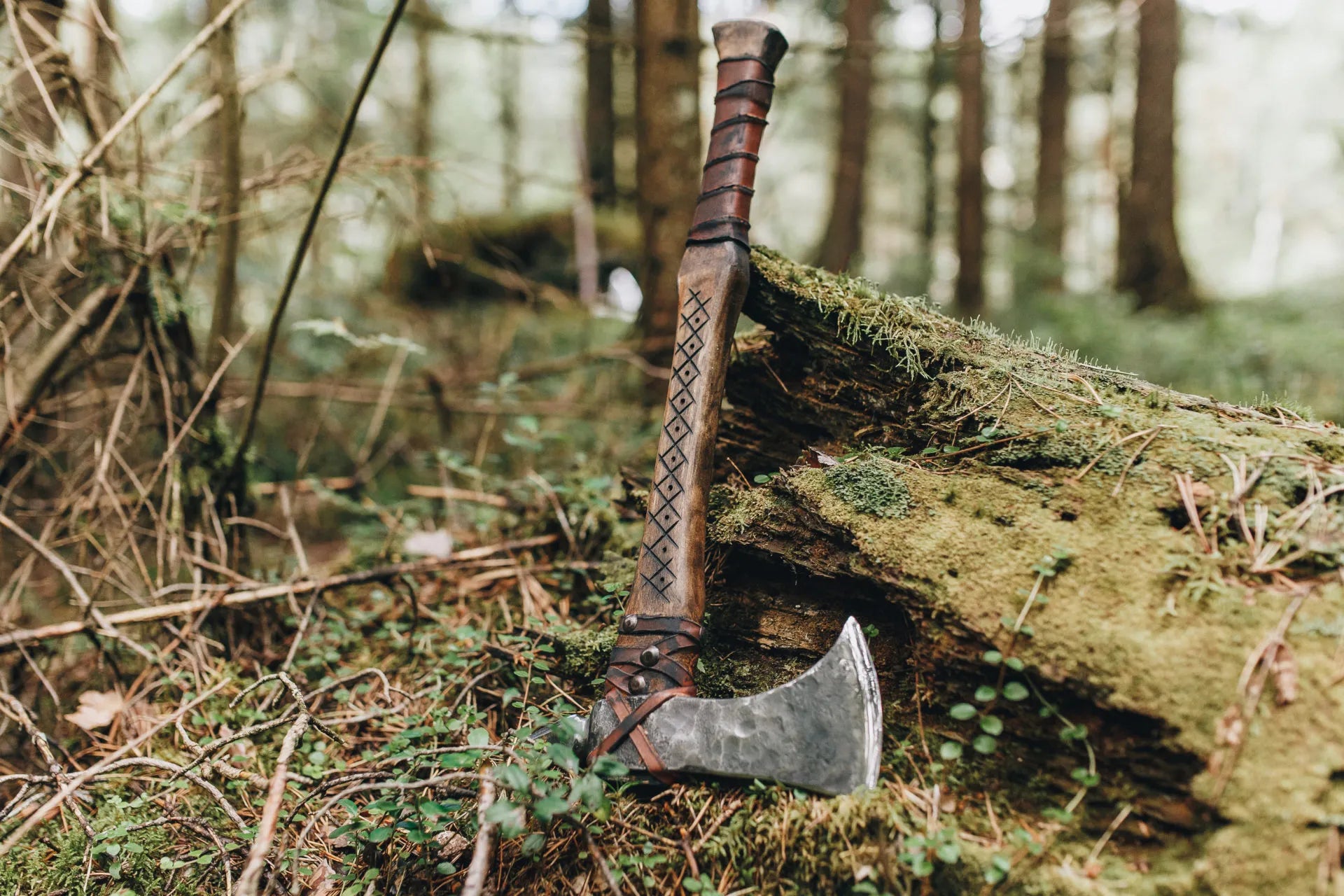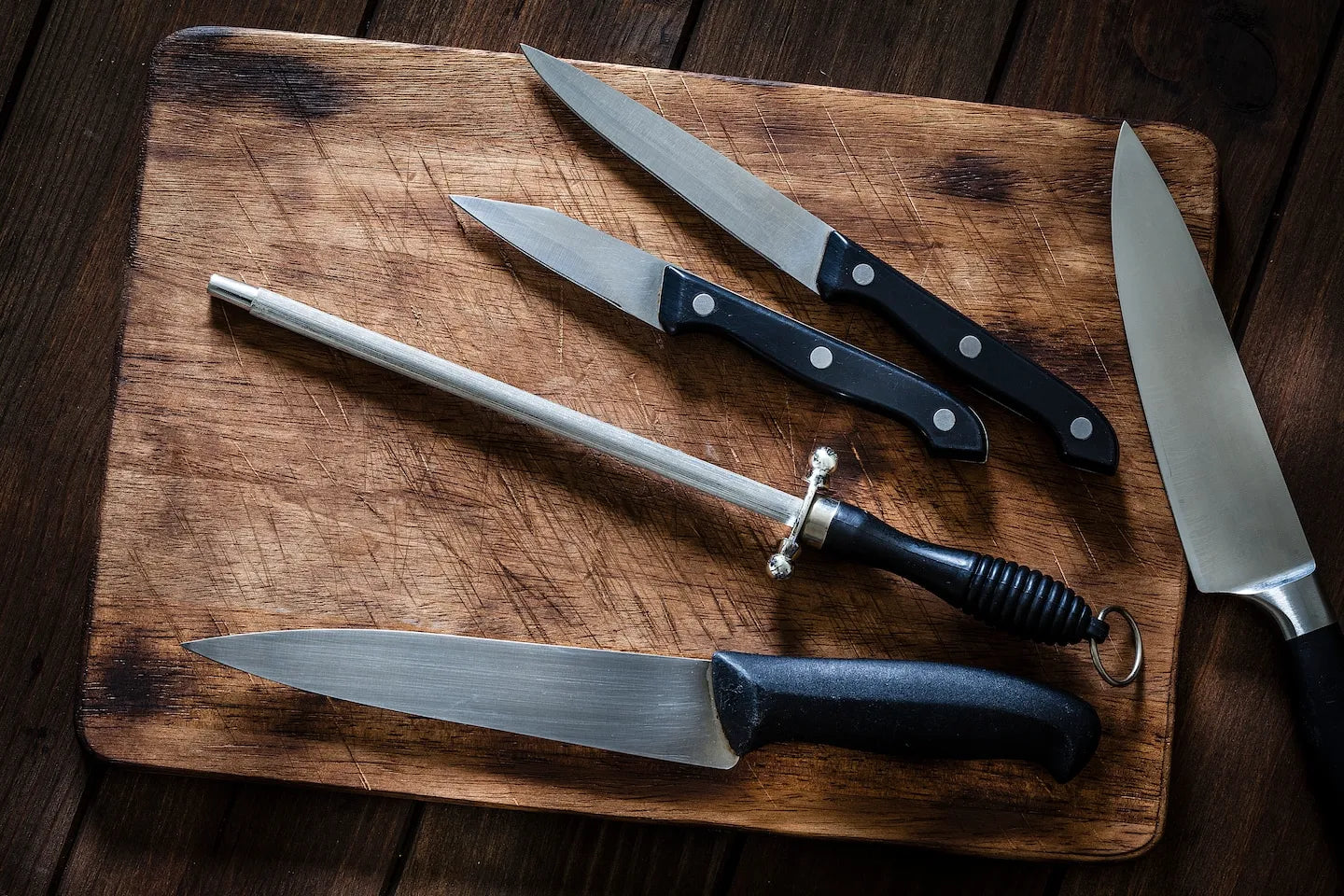
How to Use a Knife Kit?
Whether you are a beginner in cooking or a pro in the kitchen, a knife kit is highly necessary. It allows you to slice, dice, and chop raw materials that make up your meal appropriately. However, this would be a shame if you did not use every knife correctly in your kit, as they become useless for efficiency and safety. Here is how to use a knife kit like a pro!
Understanding of Knives in Your Kit
1. Chef's Knife
Typically your workhorse knife is a chef's knife. It has a wide blade and pointy end and is amazing for chopping, dicing, and slicing larger items.
- How To Use It: Grip the handle tightly. Keep the tip on the cutting board, then rock the blade back and forth.
- Best for: Veges, meat, herbs.
A chef knife is the backbone of any kitchen, offering precision and control for a variety of cooking tasks, from dicing to slicing!
2. Paring Knife
This is a small knife for small delicate work. Narrow blade great for peeling, trimming, and cutting small ingredients.
- How to Use: Use as a pencil pointed for precision. Peel with the knife coming toward you, watching what you are doing.
- Best for: To peel fruit, cut small vegetables, detailed cuts.
3. Bread Knife
The bread knife is long and serrated. This allows you to cut through crusty bread without crushing it, which can often happen by pressing down on something.
- Usage: Let the serrations do the cutting. Take a sawing motion; do not try to pierce through things.
- Suits: bread, cake, and tomatoes.
4. Utility Knife
Positioned somewhere between the chef's and paring knife is a utility knife. It fits most jobs; its diversity can offer high flexibility upon chopping.
- How to Use: Chopped up like a mini chef's knife. Good for jobs that are too big for a paring knife but too small for a chef's knife.
- Best for: Sandwiches, small fruits, and slicing cheeses.
If you're looking for a reliable survival knife, browse the versatility of a Bowie knife for outdoor adventures and rugged tasks!
Basic Knife Skills to Learn
Now, let's understand how to wield a knife in the first place. These will be the most basic skills you need.
1. The Claw Grip
When holding your food, curl down your fingers. This creates a "claw" which protects your fingertips while slicing.
- Why It's Useful: It protects your fingers and holds them steady while cutting.
- Pit Stop: Practice at slower speeds until you feel comfortable with it.
2. Rocking Motion
Using a rocking motion with your chef's knife makes chopping speedier and more accurate.
- How to Do It: Place the knife on the board tip and move the handle up and down in a rocking motion.
- When to Use: Quick chop for herbs, garlic, or onions.
3. Chopping vs. Slicing
Some foods demand specific techniques. Chopping is a rapid, up-and-down motion that results in small, uniform pieces. Slicing is a more controlled cut that will evenly slice through produce and meat.
For efficient field dressing and skinning, a Skinner knife is an essential tool for hunters and outdoor enthusiasts!
Safety Tips for Using Your Knife Kit
Here are some safety tips you must observe.
1. Sharp knives
It is easier to slip if you use a blunt knife since trying to cut something will require significant force. The best way of avoiding this is to maintain your knives by honing the edges with the use of a sharpening stone or hone rod.
2. Stable Cutting Board
Your cutting board shouldn't slip. A steady surface prevents accidents. Place a damp cloth underneath your board to keep it steady. Whether you're chopping vegetables or preparing meats, a high-quality kitchen knife is a must-have in every culinary setup!
3. Store Knives Properly
Store knives properly to safeguard you and your knives. Using a knife block or magnetic strip discourages clutter and secures aesthetics. Never store knives in a drawer. Tossing knives around in the name of decluttering a drawer causes accidents and dull blades.
The Final Thoughts
How to use a knife kit? Practicing on each knife requires practice. Here are some last tips to get you started:
- Practice with Safe Ingredients: Start with soft fruits such as bananas and hone your skills.
- Invest in Quality: A good knife kit makes cooking enjoyable and effective.
- Take It Slow: Knife skill mastery requires time. Focus on accuracy before mastering speed.
Nothing seemed intimidating about using a knife kit once I understood each knife and learned basic skills! Looking for top-quality knives? Check out a wide range of premium tools at Knives Hives, your go-to source for professional and kitchen knives!








